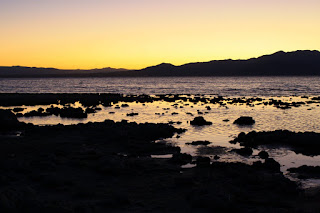TrekWorld.com Contributing Travelers Segment Idea
When traveling there are items I prefer for certain conditions, like thermals if it goes below 40ºF, dried cocoa leaves if I'm traveling above 10,000 feet, or my Tevas if I foresee some water walking along the way.
More importantly there are items that I require for every condition, I've spent some serious time figuring out exactly what I'll need to stay comfortable & on target when venturing away from home.
(5) A Knife (Around a 4" blade, folding & locking) - of course I have a favorite, but with the current TSA laws and beyond that whatever rules each country's customs officials are trying to enforce I've opted not to go abroad with one. So I do my best to have one on my person for a few reasons outside of normal camping requirements, one is security -
I know it's usually not the best idea to look for trouble, but with many of these items I feel its best to have it and not need it, rather than need it and not have it. I keep it in my pocket and have never pulled it out for safety, only held it secretly when the atmosphere wasn't so secure. The other and more practical reason is for eating, in the more populated less sanitary looking areas the only fresh food you can trust is fruits & vegetables, and even then you should take precautions. I'll only buy whole pieces with the skin on, making sure to clean it myself. I'll find this in each areas market district shortly before I go off the beaten path.
(4) Zip-off pants are practical since you can convert them to a cooler garment when you don’t require lower leg protection. Green nylon matches most of my shirts and helps me blend in. These pants dry quickly, are light, never wrinkle & easy to clean. (although I rarely worry about that unless I go over 10 days.) I’ve found them at most sports or outdoor supply shops and usually buy two pair since these take more beating than most items in my arsenal.
(3) A blanket, I know, seems like overkill if you’re already outfitted with a good sleep system. Over the past five years I’ve upgraded my bag & I don’t get it out unless it’s protected from the elements via some type of shelter... tent, bivi or something larger than my pad... like a blanket. I strap it to the outside of my pack for easy access and use it during rest stops or around camp as a clean area to spread out. My favorite was from Peru, Alpaca, slightly longer and very durable compared to most. I accidentally left in in New Zealand and replaced it with a Yak version from Nepal, its just not the same but fits the need for now.

(2) A bandana, simple & usually navy blue when purchased. This has become significantly helpful since the loss of my hair, it whisks the sweat from my brow keeping it from my eyes - additionally since it gets soaked it helps me stay cool when the wind kicks up a little. I imagine there’s some health benefit from holding onto that moisture, but I’m much happier with it’s versatility. It will work as a bandage, a mask, headband, hat, handkerchief, washcloth, a short rope, dishrag and a makeshift pouch. If I lose I find another before I continue on my journey, most trips I have at least two.
(1) A compass, pretty much the same one I had in Cub Scouts when they taught me how to use. I always have this on my person when outside of my normal routine, it helps during darkness & situations when the sun is not readily available. I find it more useful during the early stages of a new location, as finding bearing is part of my acclimatization. Although very useful in nature when coupled with a map, I also find it a main tool when navigating within and away from more urban areas as well. I never trust my phone, and rarely have access to a GPS.
A few other things I consider standards for healthy living depending on the environment:
- Good Boots, waterproof & lightweight, arch support
- Tevas (or some water-friendly footwear, Crocs or Keens also)
- Fleece pullover
- A headlamp
- A warm hat, gloves
- Thermal Long Underwear
- A medical kit including:
- chap stick
- DDT
- cocoa leaves
- sunblock
- bandages/tape
- pain pills
- hand sanitizer

















